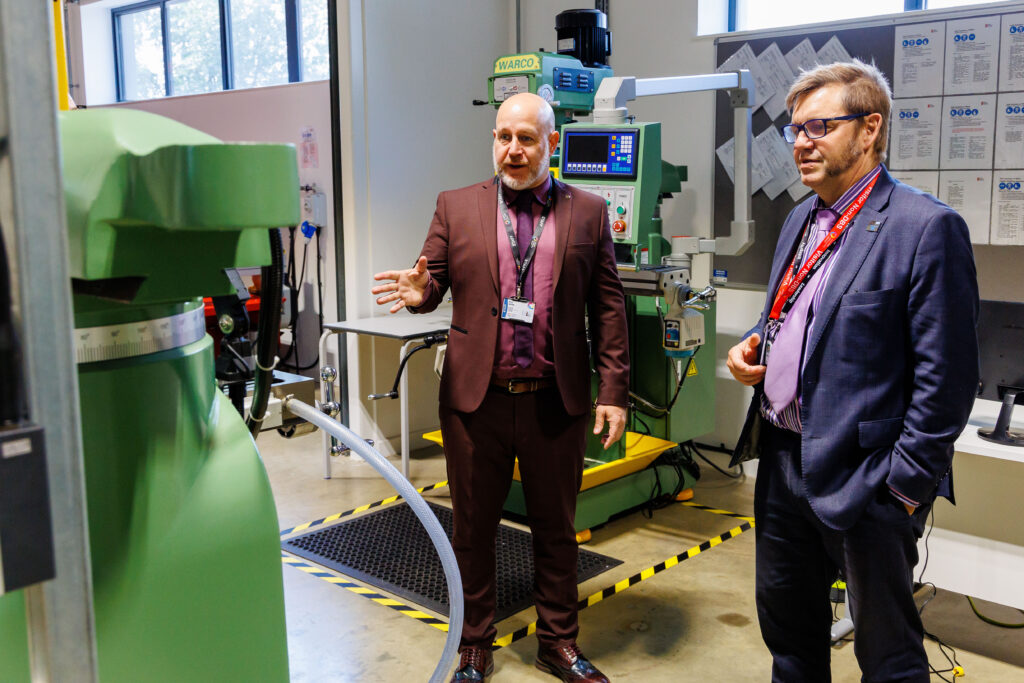As the political parties publish their manifestos in advance of the general election, Railfuture East Anglia presents its own manifesto for rail improvements we would like to see in our region over the course of the next parliament. Of course, we know that rail projects take a lot longer than that to come to fruition and indeed our ‘New Geography for East Anglia’ proposals cover the period all the way to 2050.
Still, there is much that could and should be done over the next five years if we are going to reach the desired outcomes in ‘New Geography’.
If we are to meet the challenges from a rapidly growing region, and at the same time achieve our decarbonisation goals dictated by climate change, then there is no time to lose. We cannot afford to go slow now and hope to catch up later.
So, do we have the capacity to deliver the proposals set out in the manifesto?
The answer must be yes. Much of the early work involves feasibility and planning, which are tasks that can be shared between the rail industry and local government.

Picture by Terry Harris.
What we look for above all however is leadership from a government which will be fully committed to rail, will encourage, and expect proposals to be brought forward and that can make finance available for new projects so they can be delivered.
Our manifesto is organised under five key headings.
1: Delivery of critical projects: East West Rail and Ely/Haughley junction upgrades
The importance of these two projects can hardly be overstated.
Continuing support for East West Rail has to be maintained by the new incoming government.
The Development Consent Order for the Bletchley to Cambridge section needs to be granted and construction work got under way early in the next parliament. We look forward to seeing commitments for the running of through trains from Oxford to Norwich and Ipswich.

Picture by Terry Harris.
Government funding needs to be secured as a priority with an early date set for carrying out improvement works. It is totally unacceptable that capacity constraints at Ely North should limit the number of paths available.
Development of both freight and passenger services is constrained until these works are completed. The image (right) is from a campaign leaflet to ask the government to get Ely moving.
2: Greater Cambridge area rail improvements needed in response to the city’s rapid growth
As one of the UK’s most successful cities, a newly formed Cambridge Delivery Group is going to oversee further housing and infrastructure development within the Greater Cambridge area.
If rail is to play the role it should in the city’s transport infrastructure, it needs to be incorporated into the Group’s vision early on, due to the time it takes to implement rail projects.
Large numbers using the Cambridge stations and predicted use for Cambridge South show how successful rail already is. However, this success is concentrated along the Ely/London bound routes.
Action needs to be taken to replicate this achievement from other directions too and our proposals below will help to make this happen.
- Wisbech urgently needs to be linked back into the rail network. There is no reason to delay an early reopening of Wisbech to March, since this can be done on a shuttle basis to start with. Through running to Cambridge can be implemented later on when Ely improvements have been carried out.
- An additional station on East West Rail at St Neots should be approved to provide this rapidly growing town with direct rail access to Cambridge.
The full business case must be prepared for the following proposed schemes:
- A Haverhill to Shelford/Cambridge tram train, building on the encouraging demand study prepared by Jonathan Roberts Consulting. This line could potentially form part of a Greater Cambridge light rail system
- Redoubling of the line to Newmarket and installation of a Newmarket west curve to allow for more frequent services from Newmarket and Bury St Edmunds, and for direct services from Soham to Cambridge.
- A new station at Cambridge East.
- A new east side entrance at Cambridge station to aid passenger flows
3: Actions to encourage greater rail use across the wider East Anglian network
We set out priorities for a number of other schemes across the East Anglian rail network.
These would improve connectivity between our major towns and cities and would allow end to end journey times by rail to compete more effectively with road. They would develop and improve local networks, especially in the Greater Norwich area, and also provide stronger links with the region’s coastal communities.
- Introduce faster journey times made possible by new trains and in combination with a review of existing speed restrictions. Deliver “Norwich in
90” targets on the Great Eastern Mainline and begin to make time savings on Norwich – Cambridge services.
- Start implementing half hourly services throughout day in place of hourly on selected lines. The aim should be for all hourly services to be eventually half hourly.
- Implement hourly service Ipswich to Ely.
- Around Norwich, complete feasibility work for Broadland Business Park and set a start date for construction. Carry out improvement works to Salhouse station to cater for new North Rackheath development.
- Take first steps to create Norwich Metro and in addition to Bittern Line improvements, approve feasibility work for new stations at Hethersett and Long Stratton and also the reopening of the Dereham line for network services. There should also be seamless bus transfer at Norwich and Great Yarmouth stations to their respective city/town centres. These links could in future be considered for conversion into tram train links.
- Prepare a feasibility study for a station at South Lynn and set a date for construction.
- Advance plans for the replacement of Trowse swing bridge with a double track bridge and/or carry out capacity improvements at Trowse junction.
- Improve links with coastal communities, with Stansted Airport to Norwich or East Midland Railway services running on to Yarmouth or Lowestoft.
4: Future new ‘R120’ rail link Colchester/Chelmsford – Stansted Airport
Work carried out by Jonathan Roberts Consulting showed there could potentially be a strong case for building a new line along the A120 corridor between Braintree and Stansted Airport, which we called ‘R120’ (see map at top of next page). The benefits of this link would be to create a fast new route connecting Colchester and Chelmsford with Stansted Airport and then on to Cambridge.

Existing rail links from Colchester and Chelmsford to Stansted Airport and Cambridge are of course very circuitous, so a new link connecting these major population centres and competing strongly with road would create a major new benefit for rail users and draw many new users to rail from the congested road system.
We call for further studies to be carried out to quantify the potential benefits from constructing this new rail link.
5: Freight improvements
We cannot allow the growth of rail freight to be limited by infrastructure constraints when moving freight by rail can contribute so much to decarbonisation targets and to the easing of traffic congestion.

Monday 12 December 2022. Picture by Terry Harris.
Added to this, most freight trains are diesel hauled and a programme of electrification is much needed to reduce carbon emissions even further. We therefore call for the following actions to be taken to improve capacity across our region and to help meet decarbonisation targets:
- Secure funding for junction improvements at Ely North and Haughley (see above), and ensure works are carried out as early as possible.
- Plan for redoubling of line from Soham to Ely.
- Electrify the Felixstowe branch as a short ‘infill’ section as soon as possible.
- Plan for further electrification from Haughley to Ely and Peterborough as a part of a national programme of freight electrification. According to The Chartered Institute of Logistics and Transport, electrifying only 800 miles nationally over a 20-year time frame would permit 95% of trains to be hauled by electric locomotives, compared to only 10% at present.
FACT FILE
You can find out more about Railfuture below – the above article is taken from the latest issue of their newsletter: This issue can also be read from the website: www.railfuture.org.uk/east/rail-east/RailEast-Issue-202-June-2024.pdf.
The latest issue can always be found at www.railfuture.org.uk/east/rail-east/.
Read recent issues at www.railfuture.org.uk/east/rail-east/covers/ by clicking on the covers.
Details of a decade of back issues of RAIL EAST at www.railfuture.org.uk/East+Anglia+Newsletters
- Ian Couzens is chair of Railfuture East Anglia



























